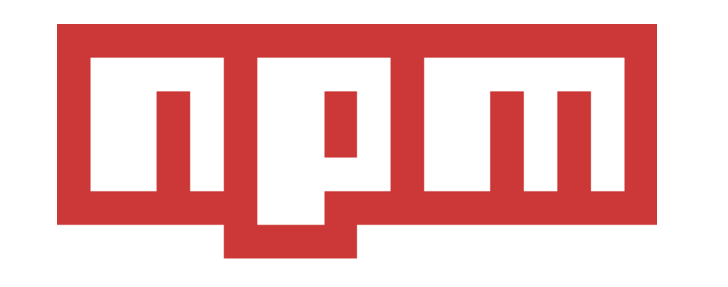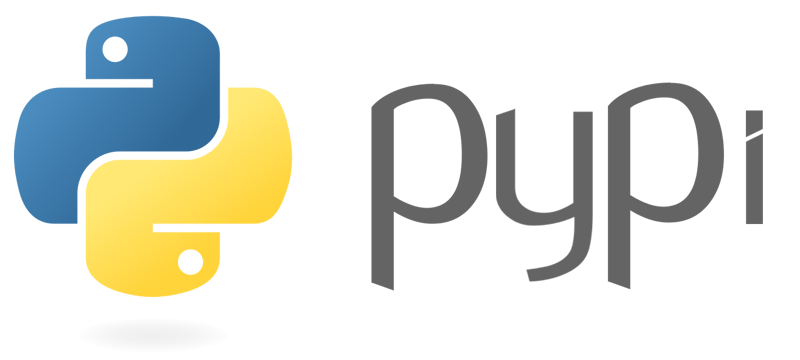 Periodic Table
Periodic Table
Periodic Table is a simple tool for getting information about chemical elements. It returns information such as the atomic number, symbol, and more based on the element provided.
This API provides reliable and fast access to periodic table data through a simple REST interface. Built for developers who need consistent, high-quality results with minimal setup time.
To use this API, you need an API key. You can get one by creating a free account and visiting your dashboard.
GET Endpoint
https://api.apiverve.com/v1/periodictableCode Examples
Here are examples of how to call this API in different programming languages:
curl -X GET \
"https://api.apiverve.com/v1/periodictable?name=hydrogen" \
-H "X-API-Key: your_api_key_here"const response = await fetch('https://api.apiverve.com/v1/periodictable?name=hydrogen', {
method: 'GET',
headers: {
'X-API-Key': 'your_api_key_here',
'Content-Type': 'application/json'
}
});
const data = await response.json();
console.log(data);import requests
headers = {
'X-API-Key': 'your_api_key_here',
'Content-Type': 'application/json'
}
response = requests.get('https://api.apiverve.com/v1/periodictable?name=hydrogen', headers=headers)
data = response.json()
print(data)const https = require('https');
const url = require('url');
const options = {
method: 'GET',
headers: {
'X-API-Key': 'your_api_key_here',
'Content-Type': 'application/json'
}
};
const req = https.request('https://api.apiverve.com/v1/periodictable?name=hydrogen', options, (res) => {
let data = '';
res.on('data', (chunk) => data += chunk);
res.on('end', () => console.log(JSON.parse(data)));
});
req.end();<?php
$ch = curl_init();
curl_setopt($ch, CURLOPT_URL, 'https://api.apiverve.com/v1/periodictable?name=hydrogen');
curl_setopt($ch, CURLOPT_RETURNTRANSFER, true);
curl_setopt($ch, CURLOPT_CUSTOMREQUEST, 'GET');
curl_setopt($ch, CURLOPT_HTTPHEADER, [
'X-API-Key: your_api_key_here',
'Content-Type: application/json'
]);
$response = curl_exec($ch);
curl_close($ch);
$data = json_decode($response, true);
print_r($data);
?>package main
import (
"fmt"
"io"
"net/http"
)
func main() {
req, _ := http.NewRequest("GET", "https://api.apiverve.com/v1/periodictable?name=hydrogen", nil)
req.Header.Set("X-API-Key", "your_api_key_here")
req.Header.Set("Content-Type", "application/json")
client := &http.Client{}
resp, err := client.Do(req)
if err != nil {
panic(err)
}
defer resp.Body.Close()
body, _ := io.ReadAll(resp.Body)
fmt.Println(string(body))
}require 'net/http'
require 'json'
uri = URI('https://api.apiverve.com/v1/periodictable?name=hydrogen')
http = Net::HTTP.new(uri.host, uri.port)
http.use_ssl = true
request = Net::HTTP::Get.new(uri)
request['X-API-Key'] = 'your_api_key_here'
request['Content-Type'] = 'application/json'
response = http.request(request)
puts JSON.pretty_generate(JSON.parse(response.body))using System;
using System.Net.Http;
using System.Text;
using System.Threading.Tasks;
class Program
{
static async Task Main(string[] args)
{
using var client = new HttpClient();
client.DefaultRequestHeaders.Add("X-API-Key", "your_api_key_here");
var response = await client.GetAsync("https://api.apiverve.com/v1/periodictable?name=hydrogen");
response.EnsureSuccessStatusCode();
var responseBody = await response.Content.ReadAsStringAsync();
Console.WriteLine(responseBody);
}
}Authentication
This API requires authentication via API key. Include your API key in the request header:
X-API-Key: your_api_key_hereInteractive API Playground
Test this API directly in your browser with live requests and responses.
Parameters
This API supports multiple query options. Use one of the following:
Option 1: Get Element Information by Name
| Parameter | Type | Required | Description | Default | Example |
|---|---|---|---|---|---|
| name | string | Yes | The name of the chemical element to get information about | - | hydrogen |
Option 2: Get Element Information by Symbol
| Parameter | Type | Required | Description | Default | Example |
|---|---|---|---|---|---|
| symbol | string | Yes | The symbol of the chemical element to get information about | - | H |
Response
The API returns responses in JSON, XML, YAML, Markdown, and CSV formats:
Example Responses
{
"status": "ok",
"error": null,
"data": {
"name": "Hydrogen",
"appearance": "colorless gas",
"atomic_mass": 1.008,
"boil": 20.271,
"category": "diatomic nonmetal",
"density": 0.08988,
"discovered_by": "Henry Cavendish",
"melt": 13.99,
"molar_heat": 28.836,
"named_by": "Antoine Lavoisier",
"number": 1,
"period": 1,
"group": 1,
"phase": "Gas",
"source": "https://en.wikipedia.org/wiki/Hydrogen",
"summary": "Hydrogen is a chemical element with chemical symbol H and atomic number 1. With an atomic weight of 1.00794 u, hydrogen is the lightest element on the periodic table. Its monatomic form (H) is the most abundant chemical substance in the Universe, constituting roughly 75% of all baryonic mass.",
"symbol": "H",
"xpos": 1,
"ypos": 1,
"wxpos": 1,
"wypos": 1,
"shells": [
1
],
"electron_configuration": "1s1",
"electron_configuration_semantic": "1s1",
"electron_affinity": 72.769,
"electronegativity_pauling": 2.2,
"ionization_energies": [
1312
],
"cpk-hex": "ffffff",
"block": "s"
}
}<Root>
<status>ok</status>
<error />
<data>
<name>Hydrogen</name>
<appearance>colorless gas</appearance>
<atomic_mass>1.008</atomic_mass>
<boil>20.271</boil>
<category>diatomic nonmetal</category>
<density>0.08988</density>
<discovered_by>Henry Cavendish</discovered_by>
<melt>13.99</melt>
<molar_heat>28.836</molar_heat>
<named_by>Antoine Lavoisier</named_by>
<number>1</number>
<period>1</period>
<group>1</group>
<phase>Gas</phase>
<source>https://en.wikipedia.org/wiki/Hydrogen</source>
<summary>Hydrogen is a chemical element with chemical symbol H and atomic number 1. With an atomic weight of 1.00794 u, hydrogen is the lightest element on the periodic table. Its monatomic form (H) is the most abundant chemical substance in the Universe, constituting roughly 75% of all baryonic mass.</summary>
<symbol>H</symbol>
<xpos>1</xpos>
<ypos>1</ypos>
<wxpos>1</wxpos>
<wypos>1</wypos>
<shells>1</shells>
<electron_configuration>1s1</electron_configuration>
<electron_configuration_semantic>1s1</electron_configuration_semantic>
<electron_affinity>72.769</electron_affinity>
<electronegativity_pauling>2.2</electronegativity_pauling>
<ionization_energies>1312</ionization_energies>
<cpk-hex>ffffff</cpk-hex>
<block>s</block>
</data>
</Root>status: ok
error:
data:
name: Hydrogen
appearance: colorless gas
atomic_mass: 1.008
boil: 20.271
category: diatomic nonmetal
density: 0.08988
discovered_by: Henry Cavendish
melt: 13.99
molar_heat: 28.836
named_by: Antoine Lavoisier
number: 1
period: 1
group: 1
phase: Gas
source: https://en.wikipedia.org/wiki/Hydrogen
summary: Hydrogen is a chemical element with chemical symbol H and atomic number 1. With an atomic weight of 1.00794 u, hydrogen is the lightest element on the periodic table. Its monatomic form (H) is the most abundant chemical substance in the Universe, constituting roughly 75% of all baryonic mass.
symbol: H
xpos: 1
ypos: 1
wxpos: 1
wypos: 1
shells:
- 1
electron_configuration: 1s1
electron_configuration_semantic: 1s1
electron_affinity: 72.769
electronegativity_pauling: 2.2
ionization_energies:
- 1312
cpk-hex: ffffff
block: s| Field | Value |
| --- | --- |
| status | ok |
| error | |
| name | Hydrogen |
| appearance | colorless gas |
| atomic_mass | 1.008 |
| boil | 20.271 |
| category | diatomic nonmetal |
| density | 0.08988 |
| discovered_by | Henry Cavendish |
| melt | 13.99 |
| molar_heat | 28.836 |
| named_by | Antoine Lavoisier |
| number | 1 |
| period | 1 |
| group | 1 |
| phase | Gas |
| source | https://en.wikipedia.org/wiki/Hydrogen |
| summary | Hydrogen is a chemical element with chemical symbol H and atomic number 1. With an atomic weight of 1.00794 u, hydrogen is the lightest element on the periodic table. Its monatomic form (H) is the most abundant chemical substance in the Universe, constituting roughly 75% of all baryonic mass. |
| symbol | H |
| xpos | 1 |
| ypos | 1 |
| wxpos | 1 |
| wypos | 1 |
| shells | 1 |
| electron_configuration | 1s1 |
| electron_configuration_semantic | 1s1 |
| electron_affinity | 72.769 |
| electronegativity_pauling | 2.2 |
| ionization_energies | 1312 |
| cpk-hex | ffffff |
| block | s || status | error | name | appearance | atomic_mass | boil | category | density | discovered_by | melt | molar_heat | named_by | number | period | group | phase | source | summary | symbol | xpos | ypos | wxpos | wypos | shells | electron_configuration | electron_configuration_semantic | electron_affinity | electronegativity_pauling | ionization_energies | cpk-hex | block |
|---|---|---|---|---|---|---|---|---|---|---|---|---|---|---|---|---|---|---|---|---|---|---|---|---|---|---|---|---|---|---|
| ok | Hydrogen | colorless gas | 1.008 | 20.271 | diatomic nonmetal | 0.08988 | Henry Cavendish | 13.99 | 28.836 | Antoine Lavoisier | 1 | 1 | 1 | Gas | https://en.wikipedia.org/wiki/Hydrogen | Hydrogen is a chemical element with chemical symbol H and atomic number 1. With an atomic weight of 1.00794 u, hydrogen is the lightest element on the periodic table. Its monatomic form (H) is the most abundant chemical substance in the Universe, constituting roughly 75% of all baryonic mass. | H | 1 | 1 | 1 | 1 | 1 | 1s1 | 1s1 | 72.769 | 2.2 | 1312 | ffffff | s |
Response Structure
All API responses follow a consistent structure with the following fields:
| Field | Type | Description | Example |
|---|---|---|---|
| status | string | Indicates whether the request was successful ("ok") or failed ("error") | ok |
| error | string | null | Contains error message if status is "error", otherwise null | null |
| data | object | null | Contains the API response data if successful, otherwise null | {...} |
Response Data Fields
When the request is successful, the data object contains the following fields:
| Field | Type | Sample Value |
|---|---|---|
| name | string | "Hydrogen" |
| appearance | string | "colorless gas" |
| atomic_mass | number | 1.008 |
| boil | number | 20.271 |
| category | string | "diatomic nonmetal" |
| density | number | 0.08988 |
| discovered_by | string | "Henry Cavendish" |
| melt | number | 13.99 |
| molar_heat | number | 28.836 |
| named_by | string | "Antoine Lavoisier" |
| number | number | 1 |
| period | number | 1 |
| group | number | 1 |
| phase | string | "Gas" |
| source | string | "https://en.wikipedia.org/wiki/Hydrogen" |
| summary | string | "Hydrogen is a chemical element with chemical symbol H and atomic number 1. With an atomic weight of 1.00794 u, hydrogen is the lightest element on the periodic table. Its monatomic form (H) is the most abundant chemical substance in the Universe, constituting roughly 75% of all baryonic mass." |
| symbol | string | "H" |
| xpos | number | 1 |
| ypos | number | 1 |
| wxpos | number | 1 |
Headers
Required and optional headers for API requests:
| Header Name | Required | Example Value | Description |
|---|---|---|---|
| X-API-Key | Yes | your_api_key_here | Your APIVerve API key. Found in your dashboard under API Keys. |
| Accept | No | application/json | Specify response format: application/json (default), application/xml, or application/yaml |
| User-Agent | No | MyApp/1.0 | Identifies your application for analytics and debugging purposes |
| X-Request-ID | No | req_123456789 | Custom request identifier for tracking and debugging requests |
| Cache-Control | No | no-cache | Control caching behavior for the request and response |
GraphQL AccessALPHA
Most APIVerve APIs support GraphQL queries, allowing you to combine multiple API calls into a single request and retrieve only the data you need. This powerful feature enables you to orchestrate complex data fetching with precise field selection.
Not all APIs support GraphQL. Check the API schema or test in the GraphQL Explorer to confirm availability for this specific endpoint.
Token Cost: Each API called in your GraphQL query consumes its standard token cost.
POST https://api.apiverve.com/v1/graphqlquery {
periodictable(
input: {
name: "hydrogen"
}
) {
name
appearance
atomic_mass
boil
category
density
discovered_by
melt
molar_heat
named_by
number
period
group
phase
source
summary
symbol
xpos
ypos
wxpos
wypos
shells
electron_configuration
electron_configuration_semantic
electron_affinity
electronegativity_pauling
ionization_energies
cpk_hex
block
}
}Note: Authentication is handled via the x-api-key header in your GraphQL request, not as a query parameter.
CORS Support
All APIVerve APIs support Cross-Origin Resource Sharing (CORS) with wildcard configuration, allowing you to call the API directly from browser-based applications without proxy servers.
| CORS Header | Value | Description |
|---|---|---|
| Access-Control-Allow-Origin | * | Accepts requests from any origin |
| Access-Control-Allow-Methods | * | Accepts any HTTP method |
| Access-Control-Allow-Headers | * | Accepts any request headers |
Browser Usage: You can make direct API calls from JavaScript running in the browser without encountering CORS errors. No additional configuration needed.
Rate Limiting
APIVerve implements rate limiting to ensure fair usage and maintain service quality across all users. Rate limits vary by subscription plan and are applied per API key.
| Plan | Rate Limit | Description |
|---|---|---|
| Free | 5 requests/min | Hard rate limit enforced - exceeding will return 429 errors |
| Starter | No Limit | Production ready - no rate limiting or throttling |
| Pro | No Limit | Production ready - no rate limiting or throttling |
| Mega | No Limit | Production ready - no rate limiting or throttling |
Rate Limit Headers
When rate limits apply, each API response includes headers to help you track your usage:
| Header | Description |
|---|---|
| X-RateLimit-Limit | Maximum number of requests allowed per time window |
| X-RateLimit-Remaining | Number of requests remaining in the current window |
| X-RateLimit-Reset | Unix timestamp when the rate limit window resets |
Handling Rate Limits
Free Plan: When you exceed your rate limit, the API returns a 429 Too Many Requests status code. Your application should implement appropriate backoff logic to handle this gracefully.
Paid Plans: No rate limiting or throttling applied. All paid plans (Starter, Pro, Mega) are production-ready.
Best Practices:
- Monitor the rate limit headers to track your usage (Free plan only)
- Implement caching where appropriate to reduce API calls
- Upgrade to Pro or Mega for guaranteed no-throttle performance
Note: Rate limits are separate from token consumption. You may have tokens remaining but still hit rate limits on Free tier.
Client Libraries
To get started with minimal code, most of our APIs are available through client libraries and clients:
Error Codes
The API uses standard HTTP status codes to indicate success or failure:
| Code | Message | Description | Solution |
|---|---|---|---|
| 200 | OK | Request successful, data returned | No action needed - request was successful |
| 400 | Bad Request | Invalid request parameters or malformed request | Check required parameters and ensure values match expected formats |
| 401 | Unauthorized | Missing or invalid API key | Include x-api-key header with valid API key from dashboard |
| 403 | Forbidden | API key lacks permission or insufficient tokens | Check token balance in dashboard or upgrade plan |
| 429 | Too Many Requests | Rate limit exceeded (Free: 5 req/min) | Implement request throttling or upgrade to paid plan |
| 500 | Internal Server Error | Server error occurred | Retry request after a few seconds, contact support if persists |
| 503 | Service Unavailable | API temporarily unavailable | Wait and retry, check status page for maintenance updates |
Need help? Contact support with your X-Request-ID for assistance.
Frequently Asked Questions
How do I get an API key?
What are tokens and how do they work?
Tokens are your API usage currency. Each successful API call consumes tokens based on the API's complexity. Most APIs cost 1 token per call, while more complex APIs may cost 2-5 tokens. Failed requests and errors don't consume tokens. Check the API details above to see the token cost for this specific API.
Can I use this API in production?
The free plan is for testing and development only. For production use, upgrade to a paid plan (Starter, Pro, or Mega) which includes commercial use rights, no attribution requirements, and guaranteed uptime SLAs. All paid plans are production-ready.
Can I use this API from a browser?
What happens if I exceed my token limit?
When you reach your monthly token limit, API requests will return an error until you upgrade your plan or wait for the next billing cycle. You'll receive notifications at 80% and 95% usage to give you time to upgrade if needed.
Was this page helpful?
Help us improve our documentation



